Are you navigating the complexities of programmatic advertising platforms like Google Ads, MediaMath, and PubMatic?
These platforms, pivotal in digital marketing, can seem daunting with their advanced features, particularly for beginners. However, understanding their transformative capabilities is crucial.
The primary benefit of these platforms lies in their data-driven, automated approach, enabling precise and swift connection with your target audience. They offer customized targeting and diverse ad formats, ensuring effective message delivery.
In this post, guided by Flying V Group’s expertise and experience with clients like Vasco Assets and Sauz Partners, we’ll explore how these platforms enhance advertising outcomes, driving the growth and evolution of digital advertising.
- What are Programmatic Advertising Platforms?
- 7 Top Programmatic Advertising Platforms to Use in 2024
- 1. Google Ad Manager: The Supply-Side Giant
- 2. PubMatic: A Comprehensive Platform for Publishers and Marketers
- 3. MediaMath: Mastery in Omnichannel Campaigns
- 4. Simpli.fi: Programmatic Advertising Redefined
- 5. Salesforce Audience Studio: Data Management Excellence
- 6. StackAdapt: The Choice for Agencies
- 7. Criteo: Maximizing Revenue for Publishers
- Navigate the Complexities of Programmatic Advertising Platforms with Flying V Group
- FAQs
- How do programmatic advertising platforms work?
- How much do programmatic advertising platforms cost?
- Is Google Ads a programmatic ads platform?
- Does Facebook have a programmatic ads platform?
- What is programmatic advertising? Can you give some examples?
What are Programmatic Advertising Platforms?
Programmatic advertising platforms automate media buying and selling, using algorithms to analyze user data. This technology helps advertisers and publishers achieve their goals more efficiently, offering global reach, innovative ad formats, and real-time optimization.
They include demand-side platforms, supply-side platforms, data management platforms, and ad exchanges.
Demand-Side Platforms (DSPs) Explained:
DSPs are tools for advertisers to buy ad space across the internet. They connect advertisers with publishers, placing ads on various websites quickly and at optimal costs.
Supply-Side Platforms (SSPs) Simplified:
SSPs help publishers sell ad space to advertisers. Publishers use SSPs to fill their website’s ad slots, connecting to multiple DSPs for efficient bidding.
The Difference Between DSPs and SSPs:
While DSPs cater to advertisers, SSPs are designed for publishers. Both are integral to the programmatic ad ecosystem but serve different sides of the market.
Understanding Data Management Platforms (DMPs):
DMPs collect and analyze data from various online sources. This data helps advertisers understand customer behavior, improving their advertising strategies.
Ad Exchanges – The Marketplace:
Ad exchanges are where buying and selling of ad space occur in real time. They connect advertisers and publishers, facilitating the sale of ad inventory.
7 Top Programmatic Advertising Platforms to Use in 2024
Programmatic advertising is a staple in the digital marketing world, used widely even by those who may not fully realize its presence. While a few well-known giants dominate the industry, there’s
a diverse types of programmatic advertising platforms available, each offering unique capabilities and specializations.
Let’s explore 7 of the top programmatic advertising platforms:
1. Google Ad Manager: The Supply-Side Giant
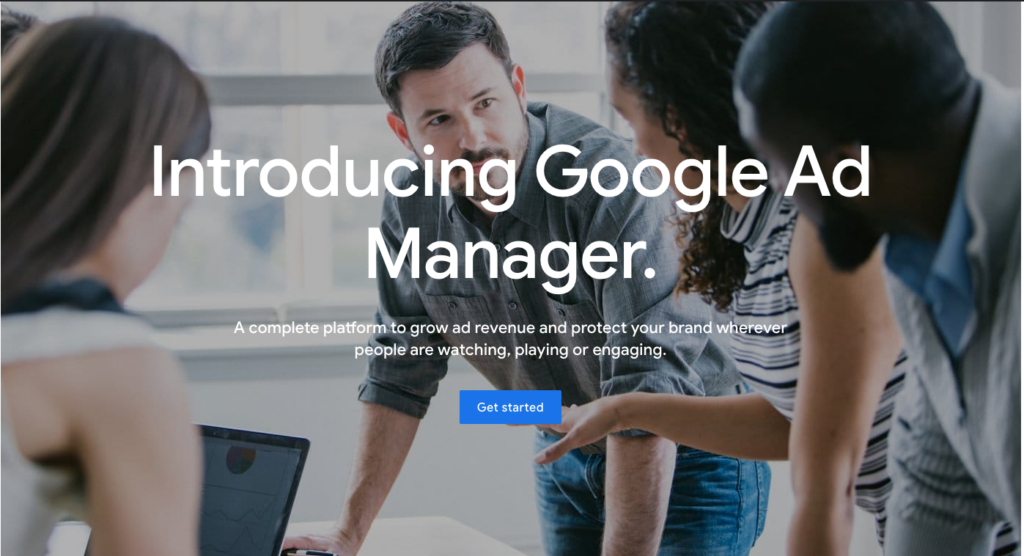
Google Ad Manager, a leading force in the supply-side arena, is instrumental in monetizing publishers’ content. It handles nearly 6 billion ad impressions daily, offering extensive reach across the internet.
Key offerings of Google Ad Manager include:
- A variety of ad formats, such as native ads and programmatic advertising.
- Machine learning for ad optimization.
- Instream, outstream, vertical, and rewarded video ads.
- Access to viewability metrics and streaming device signals for measuring ad impact.
- Data tools for generating actionable insights.
Despite its ease of use and comprehensive tools, Google Ad Manager sometimes faces criticism for not providing the highest value in terms of Revenue Per Mille (RPM).
2. PubMatic: A Comprehensive Platform for Publishers and Marketers

PubMatic stands out with its all-encompassing solutions for both publishers and marketers. It provides a private marketplace with high-quality ad inventory, diverse ad formats, channels, and robust real-time analytics. Notably, PubMatic ensures a fraud-free environment, offering refunds for fraudulent activities.
Key features for publishers include:
- ID management tools.
- OpenWrap bidding solution that offers customer management tools and performance optimization insights.
- Handling over 1.4 trillion ad bids daily, PubMatic is renowned for its vast supply of premium ad spots.
3. MediaMath: Mastery in Omnichannel Campaigns
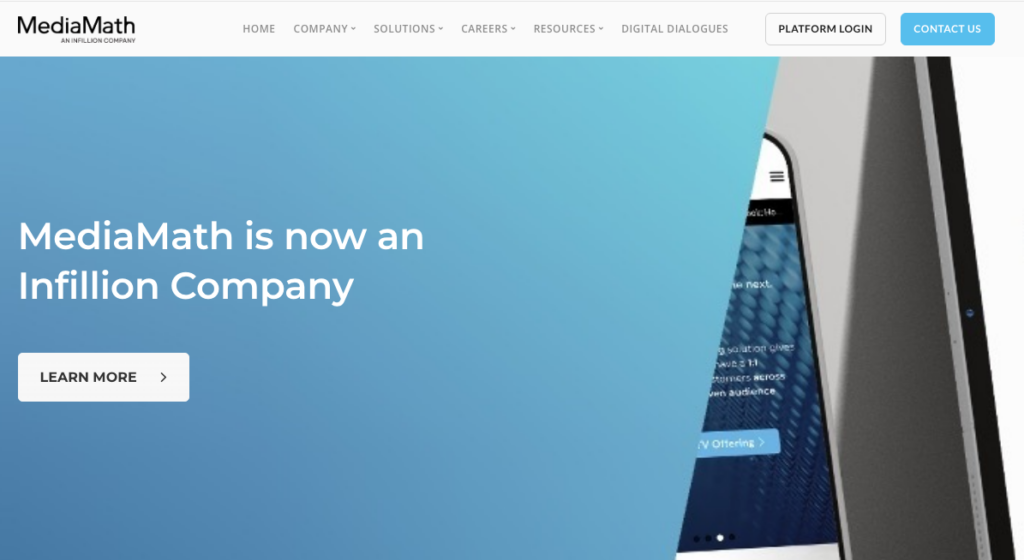
Renowned as a demand-side service, MediaMath excels in end-to-end campaign management, particularly in omnichannel advertising. Serving over 3,500 advertisers, MediaMath’s strength lies in data integration, empowering advertisers to target their most valuable customers efficiently.
Core features include:
- Dynamic budget allocation.
- A modular and customizable tech stack.
- Consumer segmentation and targeting based on KPIs, audience, context, and more.
4. Simpli.fi: Programmatic Advertising Redefined
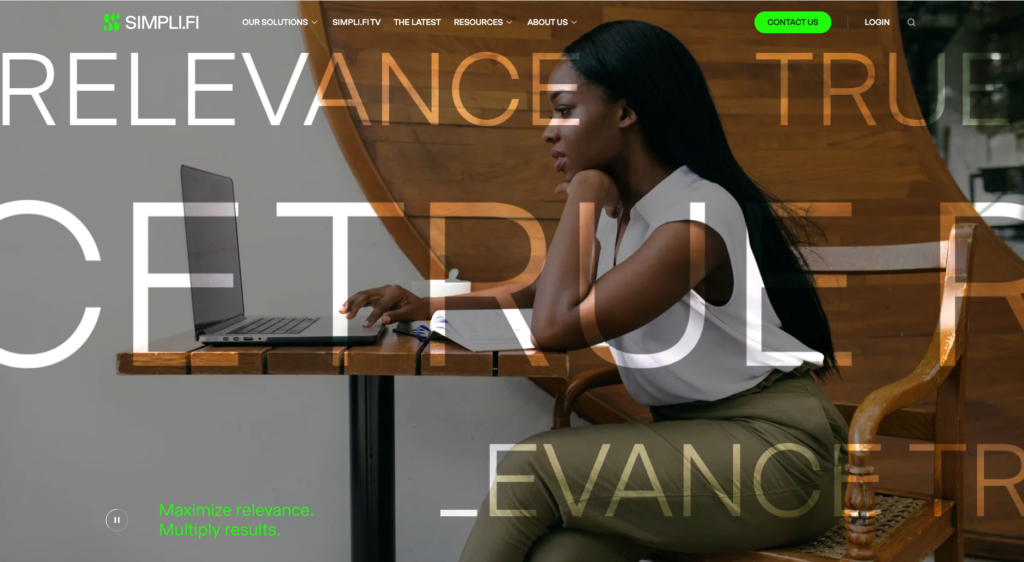
Simpli.fi, an award-winning platform, supports over 30,000 advertisers monthly. It has evolved from a DSP+ provider to an all-encompassing advertising success platform.
Simpli.fi’s Advantages:
- Diverse campaign support, including DTTC, retail media, and political campaigns.
- Omnichannel marketing capabilities.
- Custom precision targeting with storytelling attribution.
- Regular campaign launches and recent acquisition of Bidselect.
5. Salesforce Audience Studio: Data Management Excellence
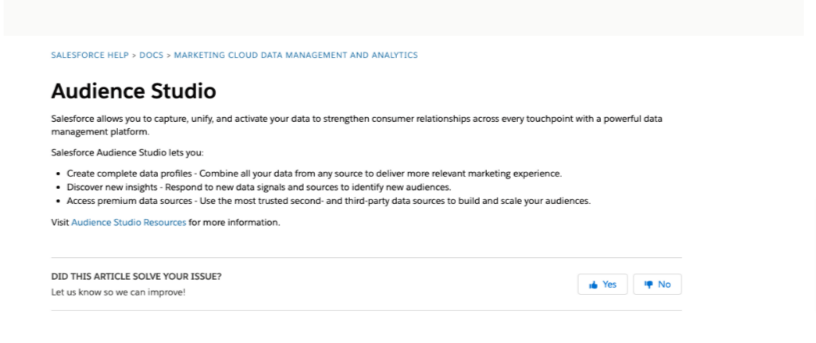
Salesforce Audience Studio, a leading DMP, enables marketers to effectively manage audience data across multiple channels.
Key Features:
- Journey Builder integration for seamless ad campaign coordination.
- Custom segment creation for multi-channel activation.
- Personalized customer interactions with relevant messaging.
- Social media engagement across platforms like Facebook, Snapchat, and Instagram.
6. StackAdapt: The Choice for Agencies
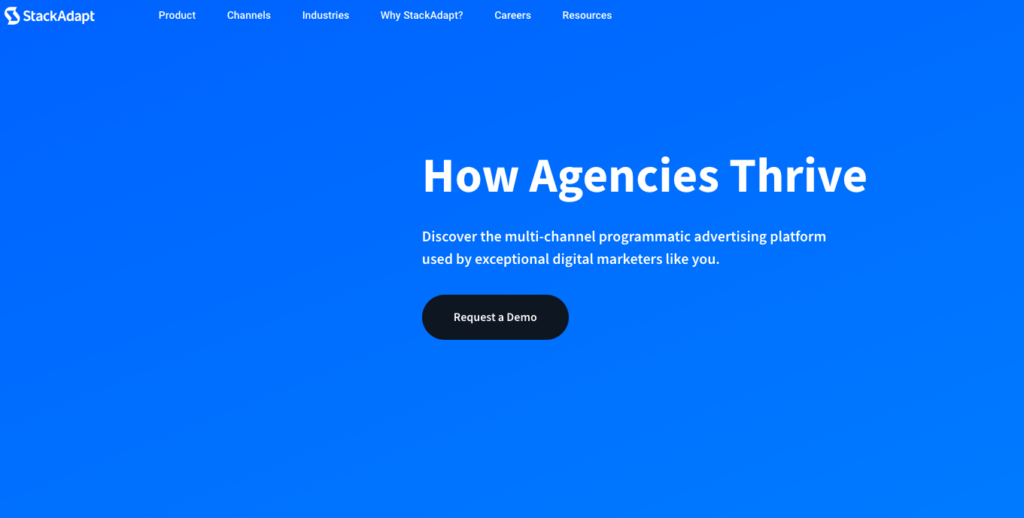
Rated highly by G2, StackAdapt is a top DSP for mid-size to large agencies, known for its advanced targeting and optimization tools.
Highlights of StackAdapt:
- Precise audience targeting based on demographics, interests, and behaviors.
- Creative optimization for enhanced ad performance.
- Real-time reporting and cross-channel support.
- Educational resources through StackAdapt Academy.
7. Criteo: Maximizing Revenue for Publishers
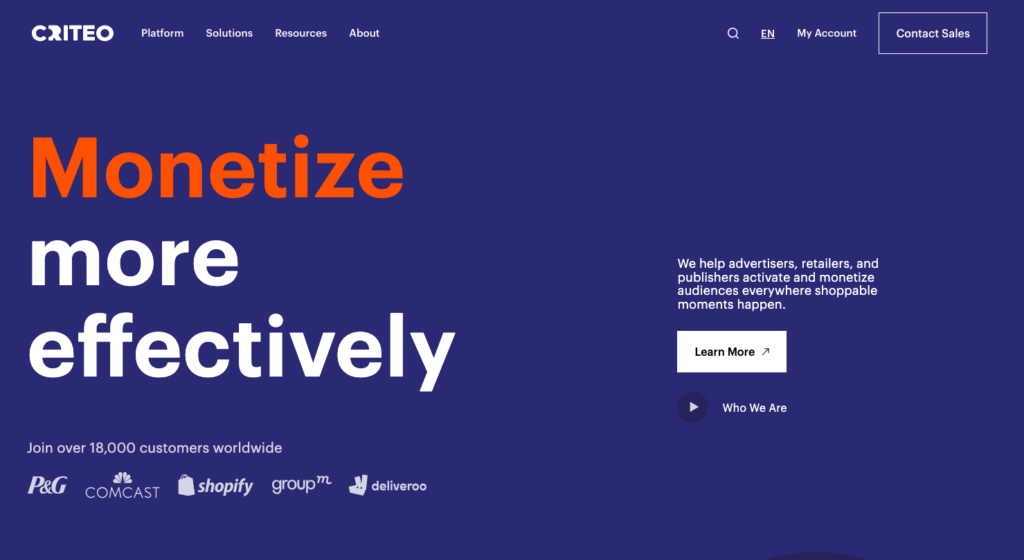
Criteo excels in aiding publishers to boost their revenue through diverse ad formats, including social media, video, display, web, and mobile ads. This platform is a powerhouse for small publishers looking to monetize their content effectively.
Key Features of Criteo:
- Dynamic retargeting and contextual advertising.
- Access to a vast commerce dataset for targeted advertising.
- Tools to start and scale retail media campaigns.
- An ad gallery showcasing various successful ad campaigns.
Navigate the Complexities of Programmatic Advertising Platforms with Flying V Group
Tackling the complexity of programmatic advertising platforms can be daunting. Are you struggling to keep up with the rapid changes and deep intricacies of this digital landscape? This challenge demands not just any expertise but the kind specialized in precision and innovation.
Flying V Group is your beacon in this digital chaos. With our tailored strategies and deep understanding of platforms like Google Ads, we ensure your advertising journey is not just about surviving but thriving.
Contact us now to transform your programmatic advertising approach and lead in the digital realm.
FAQs
How do programmatic advertising platforms work?
Programmatic advertising platforms act as intermediaries, connecting publishers who have ad space to sell with advertisers eager to purchase it. These platforms facilitate real-time bidding for ad impressions, with advertisers competing for each impression. The platform then takes a percentage of the winning bid as a commission, while the remainder is paid to the publisher.
How much do programmatic advertising platforms cost?
The cost of using programmatic advertising platforms typically involves a commission, which is a percentage of the sale price of each ad impression. This commission rate generally ranges from 10% to 20%, varying based on the platform and the specifics of the transaction.
Is Google Ads a programmatic ads platform?
Yes, Google Ads operates as a demand-side programmatic advertising platform. It enables advertisers to competitively bid in real-time for ad space, conducting auctions to determine which bid wins the ad impression based on various factors.
Does Facebook have a programmatic ads platform?
Indeed, Facebook features a demand-side programmatic advertising platform. Similar to Google Ads, it allows for real-time bidding and auctioning of advertising space, assigning ad impressions through an auction process.
What is programmatic advertising? Can you give some examples?
Programmatic advertising refers to the automated buying and selling of online advertising space, utilizing software and algorithms for efficiency and targeting. For example, if a user visits a travel blog, they might see a programmatic ad for airline tickets or hotels based on their browsing history. Another example is the display of personalized product ads on a news website, tailored to the user’s recent shopping searches or interests.




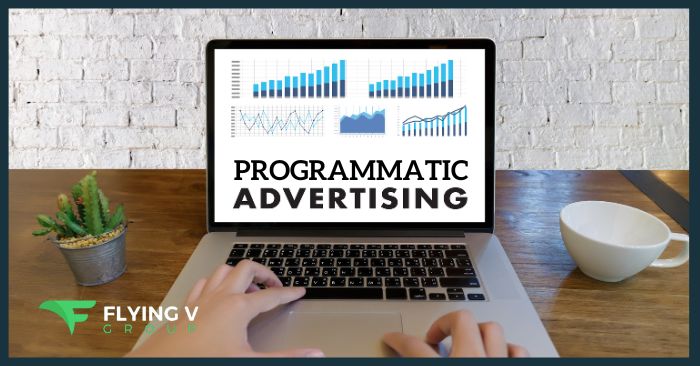

0 Comments